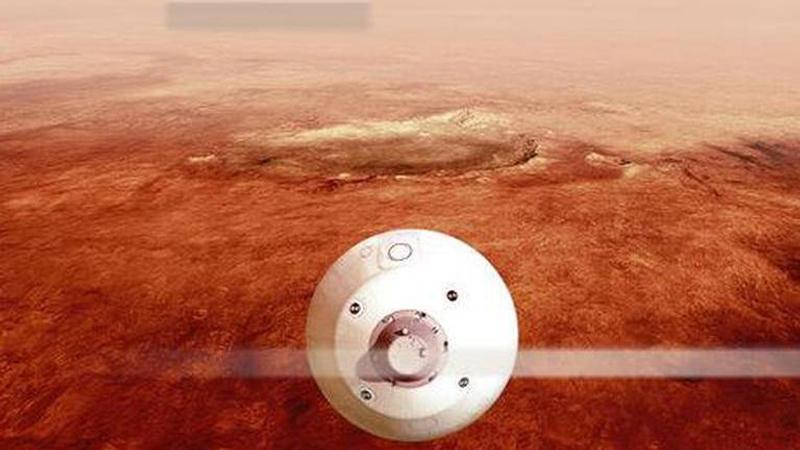Published 12:55 IST, February 18th 2021
NASA Mars rover to dig for signs of ancient life
Spacecraft aiming to land on Mars have skipped past the planet, burned up on entry, smashed into the surface, and made it down amid a fierce dust storm only to spit out a single fuzzy gray picture before dying.

Spacecraft aiming to land on Mars have skipped past the planet, burned up on entry, smashed into the surface, and made it down amid a fierce dust storm only to spit out a single fuzzy gray picture before dying. Almost 50 years after the first casualty at Mars, NASA is attempting its hardest Martian touchdown yet.
The rover named Perseverance is headed Thursday for a compact 5-mile-by-4-mile (8-kilometer-by-6.4-kilometer) patch on the edge of an ancient river delta. It's filled with cliffs, pits, sand dunes and fields of rocks, any of which could doom the $3 billion mission.
The once submerged terrain also could hold evidence of past life, all the more reason to gather samples at this spot for return to Earth 10 years from now.
Where there was water, there may have been life. That’s why NASA wants Perseverance snooping around Jezero Crater, once home to a lake fed by a river. It’s now bone dry, but 3.5 billion years ago, this Martian lake was as big and wet as Nevada and California’s Lake Tahoe.
Perseverance will shoot lasers at rocks judged most likely to contain evidence of past microscopic life, analyzing the emitted vapor, and drill into the best candidates. A few dozen core samples - about a pound’s worth (one-half kilogram) of rock and dust - will be set aside in sealed titanium tubes for future pickup.
Scientists have wanted to get hold of Mars rocks ever since NASA’s Mariners provided the first close pictures a half-century ago. NASA is teaming up with the European Space Agency to do just that.
The bold plan calls for a rover and return rocket to launch to Mars in 2026, to retrieve Perseverance’s stash of samples. NASA expects to bring back the rocks as early as 2031, several years before the first astronauts might arrive on the scene.
The rover’s super sterilized sample tubes are the cleanest components ever sent into space, according to NASA, to avoid any contaminating traces of Earth.
Image: AP
Updated 12:56 IST, February 18th 2021



